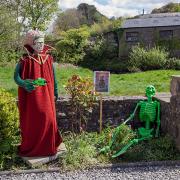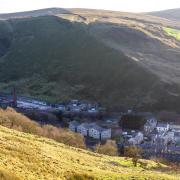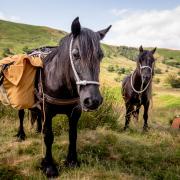It is hard to think that the whole of Witton Park was once the estate of the Fielden family in the 1800s and the now demolished mansion that was Witton House stood on the hill above the present pavilion in Witton Park.
At that time Blackburn was one the leading textile weaving towns in the country and mill owners were among the wealthiest people in the county. Textile merchant Joseph Fielden extended the house and in the 1850s the hall had 18 bedrooms, 16 servants and a heated conservatory growing pineapples and apricots.
The estate included wooded Billinge Hill that dominates the park, and it is said that Joseph Fielden planted trees of every species in the British Isles on the hill. Relics of the estate are still visible, including the lily pond and ice house.
The present Witton Park has a pavilion, athletics track, gym and all-weather football pitches. There are playgrounds for small children and an adventure playground for older children and a Go Ape high ropes adventure centre in the 480-acre park opened last year. This walk is from Witton Park and takes in the lovely hamlet of Hoghton Bottoms and the Leeds and Liverpool Canal.

1. Leave the car park and take the track that leads past the football pitches with the river Darwen on the right. Follow this until it reaches the road then cross Butlers Bridge and head towards a path leading up to Pleasington Priory. Take the path and follow it, passing the priory on the right.
2. Cross the main road and go straight on through a housing estate to the right of the Butlers Arms pub to pick up a path. Cross a stile into open fields and, keeping a wire fence on the left, go downhill and cross two more stiles to reach a stile in a wall. Cross this and with the wall on the right, follow the path through a copse of trees to another stile. Once across this, follow the track down to the river and turn right crossing a stile. With the river on the left follow the path and cross a small footbridge and then a stile to join a wider path and keep left.

3. Reach and cross an iron bridge and enter the hamlet of Hoghton Bottoms and follow the road. At the road junction keep left into Viaduct Road and follow this until it turns into a track and follow this under the viaduct.
Keep on the path into the gorge and pass the rather dramatic weir. The path can be quite muddy and slippery but keep on to reach and cross a metal gate stile into an open field. Follow the path straight on across the field to reach another metal gate stile, cross this and enter the woods.
Follow the path steeply uphill to reach and cross a third metal gate stile then bear diagonally left to another stile and cross this then, keeping the hedgerow on the right, reach a metal gate stile on the right. Cross this and turn left and cross a metal gate stile into a track and turn right and follow the track. Reach the main A674 road and turn left and follow this.
Note: The large building on the left as you enter the track was once a textile mill and you can still make out where the water wheel was to drive it. When I was a boy, the mill was closed but the ruined waterwheel was still in place. The weir further on raised the water level that fed into a long-gone millrace that fed the wheel. The gorge the path goes through is called the Orr Gorge which is a fine example of glacial erosion.
4. On the opposite side of the road there is a metal fence with a gap on the left. This was the road into two now demolished paper mills. Go through the gap and follow the road/track to find a track off to the right which climbs uphill to join the towpath of the Leeds Liverpool Canal. Turn left and follow the towpath.
Note: One of the mills was the Sun Paper Mill, where I served my apprenticeship as a maintenance electrician. The other was the Star Paper Mill where I worked for a couple of years as an electronics technician. The Star in the 1970s was the most modern mill around with the latest high-performance machinery.
5. Leave the towpath at the bridge at Cherry Tree, then go downhill and cross the railway bridge to reach Preston Old Road and turn right then cross the road and turn left into Geddes Street. At the end a stile leads into Pleasington Field, follow the path back to the car park.




























